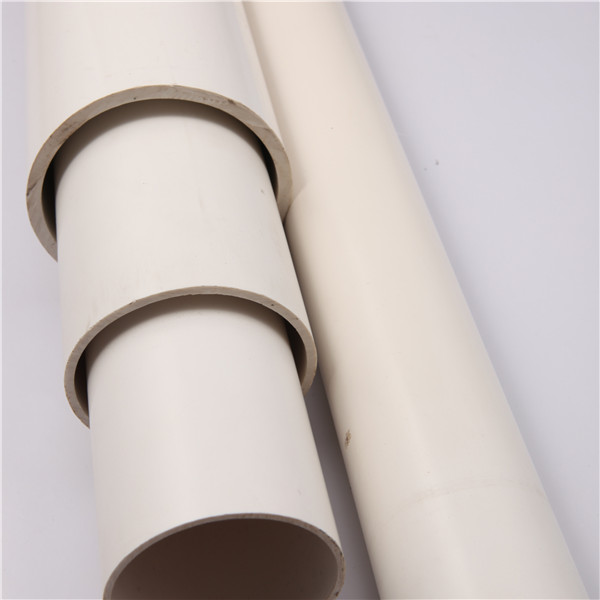Nov . 12, 2024 01:55 Back to list
hdpe irrigation pipe fittings
Understanding HDPE Irrigation Pipe Fittings Essential Components for Efficient Irrigation Systems
In the world of modern agriculture and landscaping, effective water management is crucial. One of the key components in achieving efficient water delivery systems is the use of HDPE (High-Density Polyethylene) irrigation pipe fittings. These fittings play an essential role in connecting various sections of irrigation pipes, ensuring a seamless flow of water while enhancing the overall durability and reliability of the irrigation system.
What are HDPE Irrigation Pipe Fittings?
HDPE irrigation pipe fittings are specialized connectors made from high-density polyethylene material, known for its exceptional strength, flexibility, and resistance to environmental factors. This type of piping and its fittings are designed to withstand harsh weather conditions, chemicals, and UV radiation, making them an ideal choice for agricultural activities, landscaping, and even industrial applications.
Types of HDPE Irrigation Pipe Fittings
There are several types of HDPE irrigation pipe fittings, each serving a specific purpose in the irrigation system
1. Elbows Used to change the direction of the water flow, elbows come in various angles, typically 45° and 90°, allowing for flexibility in pipe layout.
2. Tees These fittings enable branching the pipeline, allowing for multiple lines to connect to a single source. They are vital for creating efficient water distribution networks.
3. Couplings Used to connect two sections of pipe together, couplings ensure a tight and secure fit to prevent leaks and ensure optimal water flow.
4. Adapters These fittings allow the transition from HDPE pipes to other materials (such as PVC or metal), making it easier to connect different types of irrigation systems.
5. End Caps These fittings are used to close off the end of a pipe run, preventing water loss and ensuring that the pressure within the system is maintained.
hdpe irrigation pipe fittings

Benefits of HDPE Irrigation Pipe Fittings
1. Durability HDPE fittings are highly resistant to corrosion, rust, and degradation, contributing to the overall longevity of irrigation systems. They can last for decades with minimal maintenance.
2. Flexibility The flexibility of HDPE allows for easy installation, even in challenging terrains. It can handle ground movement, which is particularly beneficial in agricultural practices.
3. Low Maintenance Unlike traditional metal fittings, HDPE fittings require minimal upkeep. Their resistance to fouling ensures that they maintain optimal flow rates over time.
4. Cost-Effectiveness Although the initial investment in HDPE fittings may be higher than some alternatives, their durability and reduced maintenance needs lead to long-term savings.
5. Environmental Impact HDPE is recyclable and made from safe materials, making it an environmentally friendly choice for irrigation.
Installation and Maintenance
Proper installation of HDPE irrigation pipe fittings is crucial to prevent leaks and ensure a reliable water distribution system. Tools such as fusion machines or mechanical fittings are often used to achieve secure connections. It is vital to follow the manufacturer’s guidelines for installation to maximize the performance and lifespan of the fittings.
Regular inspections can help identify any potential issues, such as leaks or wear, allowing for timely repairs or replacements. Keeping the system free from debris and other blockages will also help in maintaining efficient water flow.
Conclusion
HDPE irrigation pipe fittings are indispensable components in modern irrigation systems, providing durability, flexibility, and efficiency. Their various forms allow for customized solutions tailored to specific agricultural or landscaping needs. As we continue to prioritize sustainable practices and efficient water management in agriculture, the role of HDPE fittings will be paramount in ensuring that our irrigation systems are not only effective but also environmentally responsible. Investing in quality HDPE irrigation pipe fittings will pay off in the long run, securing a reliable water supply for crops and landscapes alike.
-
High-Quality PPR Pipes and Fittings Durable ERA PPR & PVC PPR Solutions
NewsJul.08,2025
-
Black HDPE Cutting Board - Durable, Non-Porous & Food Safe HDPE Plastic Cutting Board
NewsJul.08,2025
-
High-Quality CPVC Panel Durable HDPE & PVC Panels Supplier
NewsJul.08,2025
-
Double PE Welding Rod Supplier - High Strength, Durable & Versatile Welding Solutions
NewsJul.07,2025
-
High-Quality PVC-O Pipe Supplier Durable 75mm PVC Pipe & Connections Leading PVC Pipe Company
NewsJul.07,2025
-
HDPE Drainage Pipe Supplier – Durable & Corrosion-Resistant Solutions
NewsJul.06,2025

